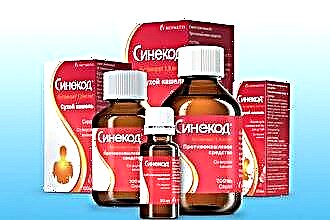The main factors
The conditions for the formation of lipid deposits are as follows:
- damage to the inner layer (endothelium) and hardening of the walls of blood vessels;
- violation of the composition of the blood.
Risk factors for atherosclerosis are a prerequisite for the development of such changes. Some of the positions influencing the formation of the disease, a person is able to control on his own, without contacting the institutions of the health care system. Others are only tracked through clinical trials. The first group of factors includes:
- Smoking... Nicotine injures the capillary endothelium. Damaged cells do not produce NO (a substance that widens the lumen of the vessel), a spasm of the peripheral part of the bloodstream occurs. This leads to an increase in blood pressure numbers and, consequently, to an exacerbation of atherosclerosis.
You can learn more about the effect of smoking on the circulatory system, as well as methods of getting rid of the addiction, by watching our video at the link below.
- Overweight... Obesity occurs due to a violation of the diet, lack of necessary physical activity. It is almost always accompanied by diabetes mellitus and arterial hypertension. Fat imbalance in the diet and associated diseases lead to the rapid formation of plaques.
- Lack of physical activity... In a person with physical inactivity, all processes in the body slow down, including biochemical reactions aimed at reducing lipid deposition.
- Age... Long before old age (in men over 45, in women over 55), the walls of the arteries gradually lose their elasticity and thicken.
- Floor... Atherosclerosis occurs more often in men.
- Heredity... If a first-line male blood relative under the age of 55 (for women - up to 65) has been diagnosed with a heart or vascular disease, this increases the risk of atherosclerosis in all of his relatives. In this case, early prevention is needed.
- Stress... During the experience of strong negative emotions, adrenal hormones provoke hyperglycemia (increased blood sugar). To normalize glucose levels, the body stimulates the production of insulin from the pancreas. Both of these substances damage the vascular wall, promoting lipid aggregation and therefore atherosclerosis.
- When alcohol is consumed, the body appears acetaldehyde, which contributes to the formation of excess cholesterol. Ethyl alcohol itself damages hepatocytes, preventing the liver from neutralizing dangerous lipid fractions that are responsible for the prevention of atherosclerosis.
You can learn more about the dangers of alcohol, as well as its detrimental effect on blood pressure, here:
Risk factors for the development of atherosclerosis, which can only be identified by special clinical studies, are:
- High blood pressure. High numbers are maintained due to the constant spasm of peripheral vessels, which leads to the compaction of their walls. Also, in hypertensive patients, the inner layer of capillaries is damaged by turbulent blood flow.
Hyperglycemia. Elevated blood glucose levels injure the vascular endothelium.
- Increased C-reactive protein (occurs in the inflammatory process).
- Violation of the lipid spectrum of blood:
- increased total cholesterol (hypercholesterolemia) and low-density lipoprotein (LDL);
- lowering high-density cholesterol;
- an increase in the amount of triglycerides.
- An increase in homocysteine (an endogenous amino acid, the excess of which damages the vascular endothelium) promotes the progress of atherosclerosis to a greater extent than hypercholesterolemia.
How to prevent illness
All risk factors are divided into non-modifiable (those that we cannot influence) and modifiable (reversible).
The unmodifiable ones include:
- age;
- floor;
- heredity.
Prevention of vascular atherosclerosis is naturally aimed at combating reversible risk factors:
- lifestyle changes (quitting smoking and drinking alcohol, getting adequate physical activity, preventing or minimizing stress);
- correction of blood biochemical parameters (reducing the level of harmful fats, combating hyperglycemia and increasing CRH);
- controlled treatment of hypertension.
Prevention of atherosclerosis is divided into:
- Primary - funds are directed to reduce the impact of factors that cause the development of the disease.
- Secondary - the use of medications in order to reduce the likelihood of complications, prevent relapses, slow down vascular tissue damage in the presence of a disease.
Primary prevention
The objectives of this stage are to prevent the occurrence and reduce the influence of risk factors among the population. It can be carried out at several levels:
- State (programs of sanitary and hygienic education of the population, improvement of the environment, improvement of living conditions).
- Local (organization at the level of polyclinics, hospitals, dispensaries):
- posters, tables, booklets, thematic talks and seminars;
- observation and treatment of patients with diabetes mellitus and arterial hypertension;
- correction of dyslipidemia.
- Personal (requires a person's awareness of responsibility for their health):
- rejection of bad habits;
- balanced diet;
- adequate physical activity;
- weight control (calculating body mass index using a formula or using an online calculator).
Secondary prevention
The goals of these measures are to stop the progress of the existing disease and prevent complications. In the presence of pathology, the risk of a negative outcome is higher, therefore, medical methods are used for correction (their need is determined by the risk of death according to the SCORE table). Without the use of drugs, the risk of heart attack is 10% in the first year of a patient's life, with each next year it increases by another 5%.
Drugs, daily intake of which prevents complications in atherosclerosis:
- statins - drugs to lower blood cholesterol levels (Atorvastatin, Rosuvastatin, Simvastatin);
- antihypertensive drugs (diuretics, beta-blockers and ACE inhibitors) - for complete control of blood pressure;
- acetylsalicylic acid ("Aspirin") - to thin the blood, reduce the risk of acute complications.
According to this scheme, secondary prevention of atherosclerosis, combined with hypertension, in old age can be carried out.
Factors provoking disorders of fat metabolism increase the likelihood of developing other diseases of the cardiovascular system. Therefore, their influence must be controlled, reducing the degree of impact on the body (especially exogenous). You need to start prevention by working on your lifestyle. It is important to follow the principles of healthy eating, modify habitual physical activity, and reduce the number of stressful situations. If the pathological process is aggravated, it is necessary to resort to medical correction to achieve optimal control.



